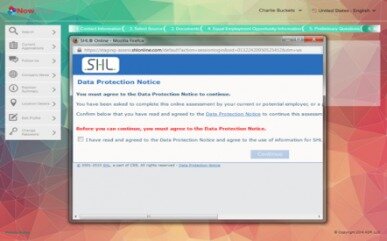Accumulated amortization and accumulated depletion work in the same way as accumulated depreciation; they are all contra-asset accounts. The naming convention is just different depending on the nature of the asset. For tangible assets such as property or plant and equipment, it is referred to as depreciation. On the income statement, depreciation is usually shown as an indirect, operating expense.
The purchase of the car and the depreciation on it are two separate transactions in your business accounting system. Depreciation is often what people talk about when they refer to accounting depreciation. This is the process of allocating an asset's cost over the course of its useful life in order to align its expenses with revenue generation. The sum-of-the-years' digits (SYD) method also allows for accelerated depreciation. Start by combining all the digits of the expected life of the asset. For example, an asset with a useful life of five years would have a reciprocal value of 1/5, or 20%.
If the asset is still used in the company’s operations, the asset’s account and accumulated depreciation will still be reported on the company’s balance sheet. The reported asset’s value and accumulated depreciation will be equal, but no entry will be required until the asset is disposed of. On the income statement, the operating profit is likely to increase because the depreciation expense will no longer be recorded on the income statement. Depreciation expenses, on the other hand, are the allocated portion of the cost of a company's fixed assets for a certain period. Depreciation expense is recognized on the income statement as a non-cash expense that reduces the company's net income or profit.

For accounting purposes, the depreciation expense is debited, and the accumulated depreciation is credited. The depreciation term is found on both the income statement and the balance sheet. On the income statement, it is listed as depreciation expense, and refers to the amount of depreciation that was charged to expense only in that reporting period.
What is a Fully Depreciated Asset?
Depreciation for the tax year, for all depreciated assets, is included on your business tax return as a business expense. Each type of business tax form has an expense line for depreciation. On the income statement, the amount of depreciation expensed or taken during the time period in question is shown along with other expenses of the business.
- It is useful to always read both the income statement and the balance sheet of a company, so that the full effect of an expense can be seen.
- The next spot where you report your depreciation is in the income statement, a report of the income and expense of the company during a certain period.
- Each year, depreciation expense is debited for $6,000 and the fixed asset accumulation account is credited for $6,000.
However, there are situations when the accumulated depreciation account is debited or eliminated. For example, let’s say an asset has been used for 5 years and has an accumulated depreciation of $100,000 in total. Each year, the depreciation expense account is debited, expensing a portion of the asset for that year, while the accumulated depreciation account is credited for the same amount. Over the years, accumulated depreciation increases as the depreciation expense is charged against the value of the fixed asset. However, accumulated depreciation plays a key role in reporting the value of the asset on the balance sheet.
What is the Salvage Value
These two functions have the same syntax, but AMORDEGRC contains a depreciation coefficient by which depreciation is accelerated based on the useful life of the asset. This formula is best for companies with assets that lose greater value in the early years and that want larger depreciation deductions sooner. This formula is best for small businesses seeking a simple method of depreciation. If you're using the wrong credit or debit card, it could be costing you serious money.

The new accounting standard provides greater transparency but requires wide-ranging data gathering. We're firm believers in the Golden Rule, which is why editorial opinions are ours alone and have not been breakeven point previously reviewed, approved, or endorsed by included advertisers. Editorial content from The Ascent is separate from The Motley Fool editorial content and is created by a different analyst team.
What Is Accumulated Depreciation?
Depletion expense is commonly used by miners, loggers, oil and gas drillers, and other companies engaged in natural resource extraction. Enterprises with an economic interest in mineral property or standing timber may recognize depletion expenses against those assets as they are used. Depletion can be calculated on a cost or percentage basis, and businesses generally must use whichever provides the larger deduction for tax purposes. On the balance sheet, a company uses cash to pay for an asset, which initially results in asset transfer. Because a fixed asset does not hold its value over time (like cash does), it needs the carrying value to be gradually reduced.
This method calculates depreciation by multiplying the balance of the asset by a depreciation rate. The asset’s total value decreases each year as depreciation is applied. The cost of an asset is recorded on the balance sheet when a business purchases it. Accumulated depreciation is the total amount of depreciation applied to an asset throughout its existence. This figure appears on the balance sheet as a deduction from the total cost of the asset.
An asset’s estimated salvage value is an important component in the calculation of depreciation. Accumulated depreciation is a contra-asset account, meaning its natural balance is a credit that reduces its overall asset value. Accumulated depreciation on any given asset is its cumulative depreciation up to a single point in its life.
Depreciation on the Income Statement (P&L Statement)
The following year, the asset is depreciated by the annual depreciation expense. In this example, the value of the asset is reduced by $3,000 which reduces the value of assets on the balance sheet by $3,000 and net income by $3,000. The car is expected to have a useful life of 5 years and a salvage value of $5,000 at the end of its useful life. Subtract the salvage value from the cost of the car and divide by the useful life for the annual depreciation expense. This is the amount that is deducted from assets at the end of each year.
Frontdoor (NASDAQ:FTDR) Has A Pretty Healthy Balance Sheet - Simply Wall St
Frontdoor (NASDAQ:FTDR) Has A Pretty Healthy Balance Sheet.
Posted: Tue, 01 Aug 2023 10:26:00 GMT [source]
A. There are many ways to calculate depreciation in Excel, and several of the depreciation methods already have a built-in function included in the software. The table below includes all the built-in Excel depreciation methods included in Excel 365, along with the formula for calculating units-of-production depreciation. To start, a company must know an asset's cost, useful life, and salvage value. Then, it can calculate depreciation using a method suited to its accounting needs, asset type, asset lifespan, or the number of units produced. The four depreciation methods include straight-line, declining balance, sum-of-the-years' digits, and units of production. Since accumulated depreciation is a credit entry, the balance sheet can show the cost of the fixed asset as well as how much has been depreciated.
If you use an asset, like a car, for both business and personal travel, you can't depreciate the entire value of the car, but only the percentage of use that's for business. Since land and buildings are bought together, you must separate the cost of the land and the cost of the building to figure depreciation on the building. When discussing depreciation, two more accounting terms are important in determining the value of a long-term asset. The straight-line depreciation method is the simplest and most often used method. The salvage value of an asset is the amount of money that the company expects to receive when it sells the asset.
Resources created by teachers for teachers
The business uses the straight-line depreciation method over three years. The sum-of-the-years’-digits depreciation method is for assets that lose their value slowly, such as buildings. Depreciation calculations determine the portion of an asset's cost that can be deducted in a given year. Depending on the method used, the amount may be the same every year. Or, it may be larger in earlier years and decline annually over the life of the asset. A company estimates an asset's useful life and salvage value (scrap value) at the end of its life.
The accounting treatment for the disposal of a completely depreciated asset is a debit to the account for the accumulated depreciation and a credit for the asset account. Using our example, the monthly income statements will report $1,000 of depreciation expense. The quarterly income statements will report $3,000 of depreciation expense, and the annual income statements will report $12,000 of depreciation expense.
Our job is to create a depreciation schedule for the asset using all four types of depreciation. The DDB function is used for calculating double-declining-balance depreciation (or some other factor of declining-balance depreciation) and contains five arguments. The first four (cost, salvage, life, and period) are required and the same as used in the DB function. The fifth argument, factor, is optional and determines by what factor to multiply the rate of depreciation. If it is left blank, Excel will assume the factor is 2 — the straight-line depreciation rate times two, which is double-declining-balance depreciation. Depreciation is an accounting method that companies use to apportion the cost of capital investments with long lives, such as real estate and machinery.
Straight-Line Depreciation
Depreciation determined by this method must be expensed in each year of the asset's estimated lifespan. The journal entry for depreciation is considered an adjusting entry, which are the entries you’ll make prior to running an adjusted trial balance. This method is used only when calculating depreciation for equipment or machinery, the useful life of which is based on production capacity rather than a number of years. Double declining depreciation is a good method to use when you expect the asset to lose its value earlier rather than later. Compared with the straight-line method, it doubles the amount of depreciation expense you can take in the first year.
For example, factory machines that are used to produce a clothing company's main product have attributable revenues and costs. To determine attributable depreciation, the company assumes an asset life and scrap value. Those three arguments are the only ones used by the SLN function, which calculates straight-line depreciation. This formula is best for production-focused businesses with asset output that fluctuates due to demand. Like double declining, sum-of-the-years is best used with assets that lose more of their value early in their useful life. Below we see the running total of the accumulated depreciation for the asset.


